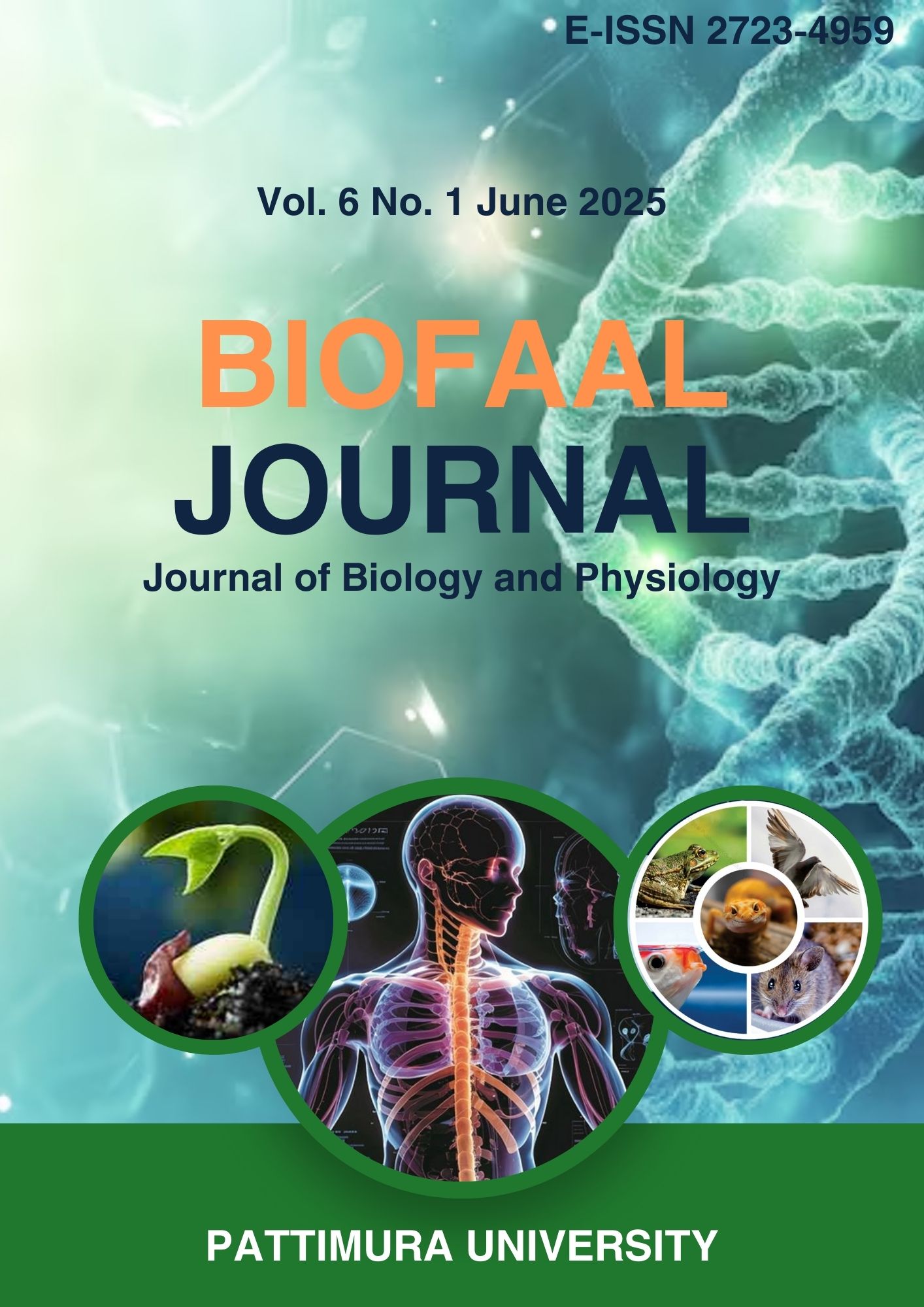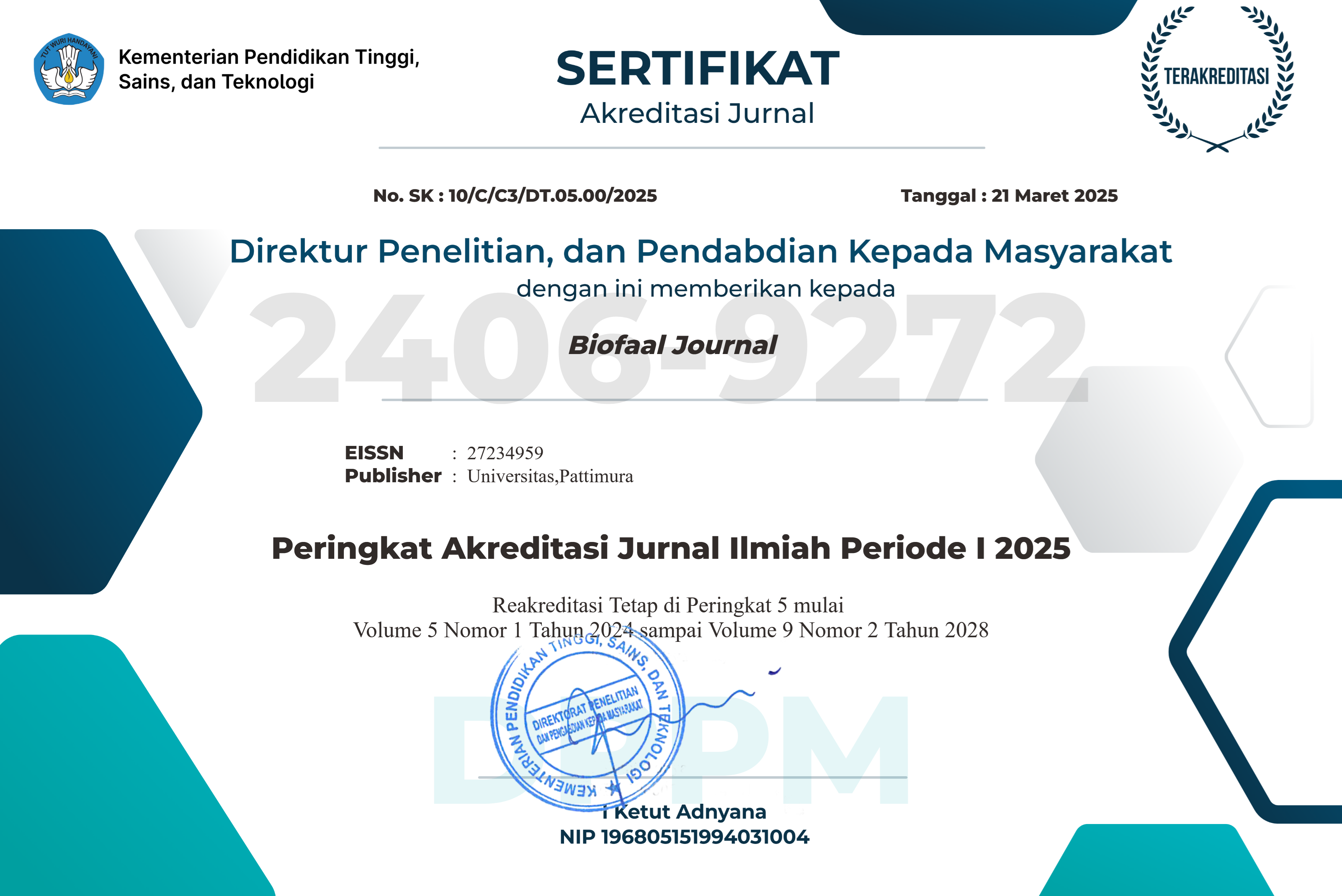Therapeutic Effect of Pulai Bark Extract (Alstonia scholaris L. R. Br) on Body Weight of Streptozotocin-Induced Mice (Mus musculus)
Abstract
Type 1 and type 2 diabetes mellitus are metabolic disorders characterized by elevated blood sugar levels (hyperglycemia) due to the body’s inability to produce insulin effectively. Sustained hyperglycemia can affect various physiological parameters, including changes in body weight. Alstonia scholaris L. R. Br is a plant widely found in Southeast Asia. Alstonia scholaris stem bark extract contains bioactive compounds of flavonoids, saponins, and polyphenols that can be antidiabetic. This study aims to determine the therapeutic effect of pulai bark extract (Alstonia scholaris L. R. Br) on the body weight of mice (Mus musculus) induced by Streptozotocin. This research is experimental. A total of 18 mice were divided into 6 groups, namely the normal control group (KN), negative control group (K-), positive control group (K+), and DM mice group given the extract at a dose of 0.4 ml/mencit/day (P1), a dose of 0.8/ml/mencit/day (P2) and 1.6 ml/mencit/day (P3). Before treatment, all mice were weighed, and initial blood sugar levels were. After that, the K-, K+, P1, P2, and P3 groups were induced with streptozotocin mice at a dose of 0.3 ml for 14 days. Furthermore, suppose there is an increase in blood sugar levels. In that case, the K+ group is given the drug metformin, and the P1, P2, and P3 groups are given Alstonia scholaris stem bark extract at a predetermined dose. Data from the study were analyzed using an ANOVA test. The results showed that giving Alstonia scholaris stem bark extract can increase the body weight of DM mice.
Downloads
Copyright (c) 2025 Abdur Rahman Assagaf, Ulva Karolina Tarigan

This work is licensed under a Creative Commons Attribution-NonCommercial-ShareAlike 4.0 International License.
1. Author retain copyright and grant the journal right of first publication with the work simultaneously licensed under a creative commons attribution license that allow others to share the work within an acknowledgement of the work’s authorship and initial publication of this journal.
2. Authors are able to enter into separate, additional contractual arrangementfor the non-exclusive distribution of the journal’s published version of the work (e.g. acknowledgement of its initial publication in this journal).
3. Authors are permitted and encouraged to post their work online(e.g. in institutional repositories or on their websites) prior to and during the submission process, as it can lead to productive exchanges, as well as earlier and greater citation of published works.








